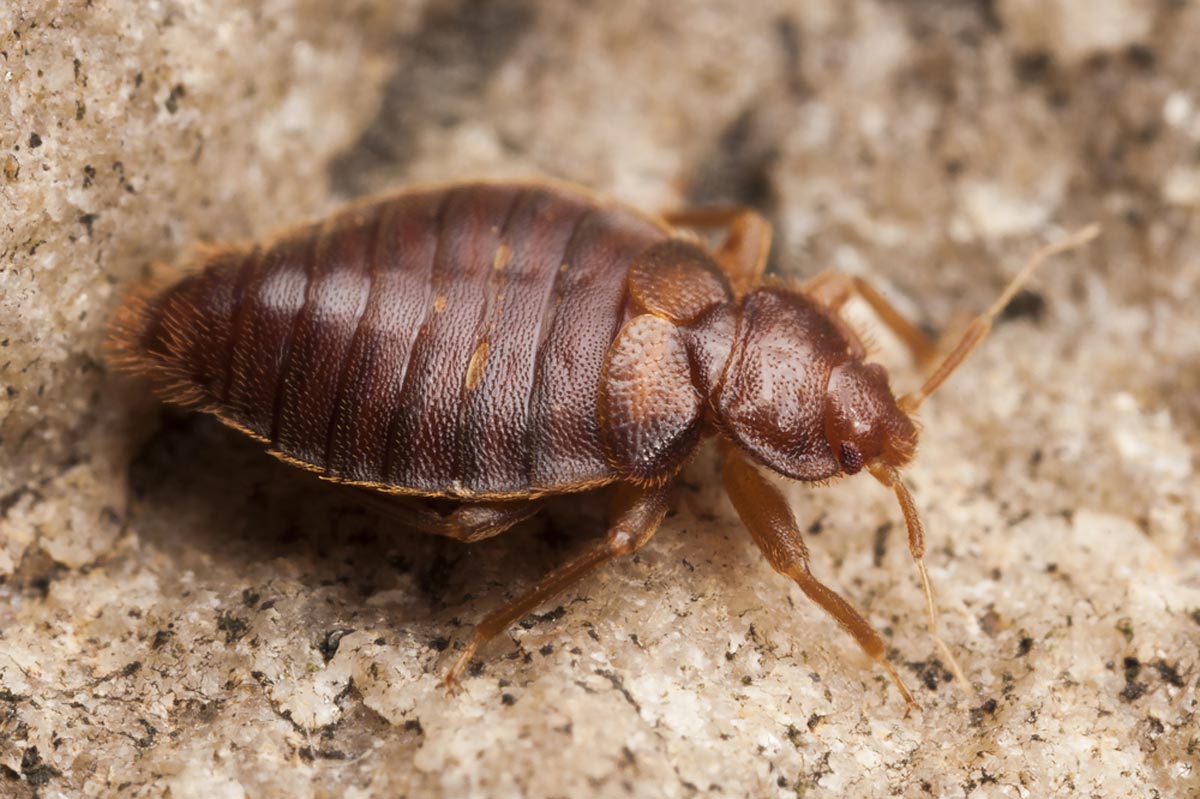A1 Bed Bug Extermination Houston: Specialist Providers
A1 Bed Bug Extermination Houston: Specialist Providers
Blog Article
Understanding the Lifecycle of Bugs for Targeted Control Strategies
Understanding the lifecycle of insects is a basic element of efficient pest management methods. By understanding the numerous phases of advancement that parasites undertake, a much more targeted and accurate technique can be taken on to regulate their populaces. This expertise not just drops light on the vulnerabilities within the parasite lifecycle yet likewise leads the way for implementing calculated actions that can interrupt their growth and recreation cycles. Through a much deeper understanding of just how insects develop and flourish, customized control techniques can be designed to resolve certain factors in their lifecycle, eventually resulting in even more effective pest administration results.
Importance of Recognizing Pest Lifecycle
Comprehending the lifecycle of parasites is necessary for creating reliable and targeted control strategies in pest management. By understanding the different phases a parasite experiences from egg to adult, pest control experts can identify weak spots in the lifecycle where treatment can be most effective. Understanding when larvae are most energetic can assist identify the optimum timing for applying larvicides. Additionally, recognizing the life-span of an insect varieties can assist in anticipating population development patterns and prospective infestation dangers.
Additionally, acknowledging the details ecological conditions required for each phase of the pest's lifecycle can guide choices on environment alteration or exemption approaches to lower and interrupt the lifecycle parasite populaces. This understanding enables pest monitoring professionals to apply positive measures instead of counting entirely on reactive therapies, resulting in even more sustainable and long-term pest control remedies. Inevitably, an extensive understanding of insect lifecycles encourages bug control specialists to customize their methods effectively, minimizing ecological impacts and optimizing control results.
Secret Stages in Bug Development
To properly apply targeted control approaches in parasite monitoring, a crucial aspect exists in adequately recognizing and recognizing the vital phases in bug advancement. Insect growth normally is composed of a number of essential stages that are essential for their lifecycle and management.

Susceptabilities in Insect Lifecycle
Throughout the various stages of a parasite's lifecycle, unique susceptabilities emerge that can be tactically targeted for effective control actions. One important vulnerability lies in the egg phase, where pests are commonly more prone to particular insecticides or organic control representatives because of their soft external shell, making them much easier targets for treatment. Additionally, the larval or nymph phase presents vulnerabilities as bugs undertake rapid growth and advancement, needing high power usage that can be manipulated by interrupting their food resources or presenting Get the facts development preventions. Pupal phases, defined by stability and makeover, offer a window for targeted control via physical obstacles or specific treatments that hinder successful introduction. Ultimately, adult pests, while much more durable because of their reproductive capability, can still be prone throughout breeding or egg-laying tasks, which can be interfered with via scent catches or sanitation strategies. Recognizing these susceptabilities in the bug lifecycle is necessary for establishing effective and exact control techniques that effectively take care of bug populations while minimizing ecological effect.
Implementing Targeted Control Procedures

Carrying out targeted control measures commonly includes a multi-faceted strategy. This may consist of habitat adjustment to make the setting less friendly to insects, such as getting rid of standing water for mosquito control or sealing access factors for rats. Additionally, organic control approaches can be made use of, where all-natural killers or virus are introduced to keep pest populations in check.
Chemical control, such as the mindful application of chemicals, is an additional common method. However, it is important to make use of these substances carefully to decrease environmental effect and prospective injury to non-target species. Integrated Bug Monitoring (IPM) approaches that combine various control steps in a collaborated and lasting way are typically one of the most reliable in attaining lasting parasite management goals. By implementing targeted control steps based on a complete understanding of parasite lifecycles, parasite populaces can be successfully controlled while reducing risks to human wellness and the setting.
Improved Parasite Administration Practices
:max_bytes(150000):strip_icc()/Bed-bug-control-tips-and-tricks-2656377-e580f433c55a4a98826e429753062084.jpg)
Furthermore, the unification of organic control agents, such as natural predators or microorganisms of parasites, can help in reducing dependence on chemical pesticides and click for source promote an extra balanced community. Carrying out physical obstacles and catches can also belong to boosted pest management methods, using safe and targeted solutions for insect control. Furthermore, making use of pheromones and other semiochemicals can disrupt pest breeding patterns and communication, causing decreased bug populaces with time.
Verdict
By identifying crucial stages in bug development and vulnerabilities in their lifecycle, targeted control steps can be implemented to lessen parasite populations. Boosted bug management techniques can aid minimize the reliance on broad-spectrum chemicals and advertise more eco friendly and sustainable bug control methods.
Recognizing the lifecycle of pests is crucial for developing reliable and targeted control strategies in insect monitoring. By comprehending the different stages a bug goes via from egg to adult, parasite control experts can identify prone points in the lifecycle where treatment can be most successful. Inevitably, a thorough understanding of bug lifecycles empowers pest control professionals to tailor their techniques efficiently, decreasing environmental influences and optimizing control outcomes.
By applying targeted control measures based on a thorough understanding of pest lifecycles, pest populaces can be successfully managed while lessening dangers to human health and the environment.
By recognizing vital stages in insect development and susceptabilities in their lifecycle, targeted control actions can be carried out to reduce pest populaces.
Report this page